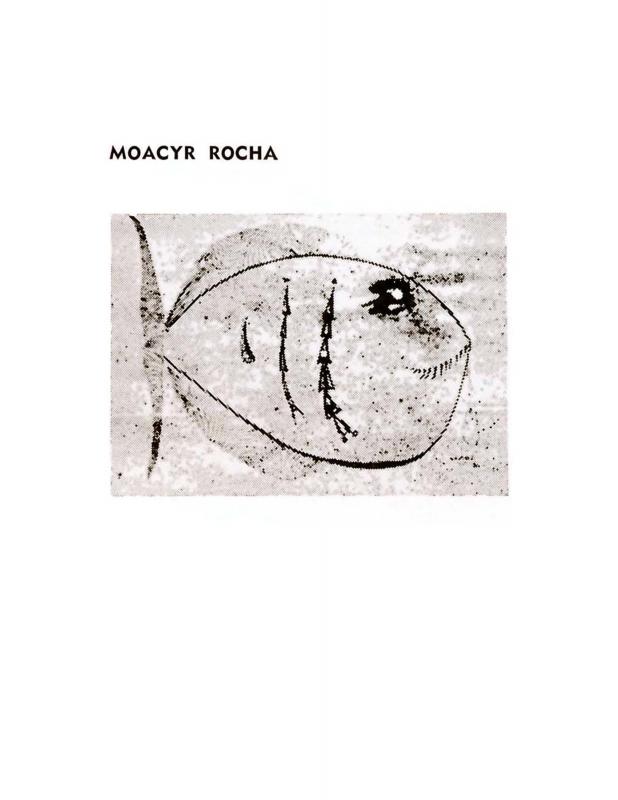Benedito Geraldo Ferraz Gonçalves (1905–79) was an art critic and journalist based in Santos, São Paulo. He began his career in the early 1920s as a reviewer for Revista do Brasil, and wrote for many São Paulo publications, including Jornal do Comércio, Diário da Noite, Correio da Tarde, A Gazeta, Diário de S. Paulo, and O Estado de S. Paulo. In 1928, he met the writer Oswald de Andrade (1890–1954) and began frequenting his modernist circles. Ferraz designed and edited the second period of the Revista de Antropofagia in 1929. Founder of the magazine O Homem Livre and editor of Mário Pedrosa’s journal Vanguarda Socialista, he later directed the literary supplement of Diário de S. Paulo and, beginning in 1956, he had an art criticism column in O Estado de S. Paulo. He served on the jury of the II Biennial of the Museum of Modern Art of São Paulo, and in 1962 he helped establish the Biennial Foundation along with Sérgio Milliet (1898–1966) and Walter Zanini (1925–2013). Ferraz may have met Rissone when he moved to Santos in 1954, or, at the exhibition he mentions at the Galeria Ambiente in São Paulo, October–November 1958.
The little-known artist Paulo Musumeci Rissone (b. 1925) was born in Sicily and moved to Brazil in 1948. A self-taught painter, he participated in the I, II, III, IV, and V editions of the Bienal Internacional de São Paulo, the 1954 Venice Bienal, the traveling exhibition Primeira Exposição Coletiva de Artistas Brasileiros na Europa (1959), and, as Ferraz mentions, won a Guggenheim International Award in 1958. Ferraz attributes the visible tensions in his work to his “personal contributions as a foreigner and his learning, done mostly here, but also to the storm he has suffered in life; he struggles with the angel which determines his personality and he firmly seems to have triumphed.” In 1968, Rissone returned permanently to Italy.
Rissone’s expressionist tendencies might explain his inclusion in this honorary exhibition at the Galeria de Arte das Folhas. When a year earlier, in 1957, art patrons of São Paulo felt that important figurative artists had been excluded from the Concrete-focused biennial, the industrialist Isaí Leirner (who, at the time, was director of the Museu de Arte Moderna de São Paulo) sponsored an alternative exhibition of 12 São Paulo-based artists. This initial exhibition, which became known as the Premio Leirner, was held in the lobby of the office building of the newspaper La Folha. Leirner eventually founded a space dedicated to this cause, known as the Galeria de Arte das Folhas, which operated from 1958–62 and hosted not only exhibitions but also debates and conferences that promoted a wider array of tendencies than those backed by the organizers of the São Paulo Bienal. Leirner and the other patrons who coalesced around the Galeria Folha often bought the exhibited art themselves and donated it to museums, thus driving the institutionalization of the showcased artists. In its four years of operation, the gallery exhibited many emerging talents, including Franz Weissmann, Regina Silveira, Maria Helena Andrés, Mário Silésio, Di Cavalcanti, Willys de Castro, and Hermelindo Fiaminghi. This catalogue also accompanied an exhibition of Anatol Wladyslaw and a retrospective of Samson Flexor, fellow recipients of the Leirner Prize for Contemporary Art in 1958.
[For more on the Prêmio Leirner de Arte Contemporânea, see the following documents in the ICAA digital archive: by Oswald de Andrade Filho “Prêmio Leirner de Arte Contemporânea, 1960” (doc. no. 1232976), and “Murilo Penteado” (doc. no. 1309128); by Luis Martins “Samson Flexor” (doc. no. 1316704); by José Geraldo Vieira “Anatol Wladyslaw” (doc. no. 1322921); by Wolfgang Pfeiffer “Moacyr Rocha” (doc. no. 1309168), and “Niobe Xandó” (doc. no. 1309188); and by Décio Pignatari “Raul Porto” (doc. no. 1309108).
For complementary reading on the Grupo Ruptura, see by Ferreira Gullar “I - O Grupo de São Paulo: I Exposição Nacional de Arte Concreta” (doc. no. 1087166); by Lothar Charoux “Ruptura” (doc. no. 771349), and “Manifesto Ruptura” (doc. no. 1232213); and by Sérgio Milliet “Duas exposições” (doc. no. 1085432)].










